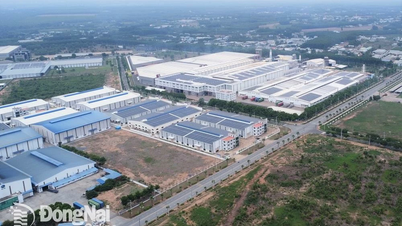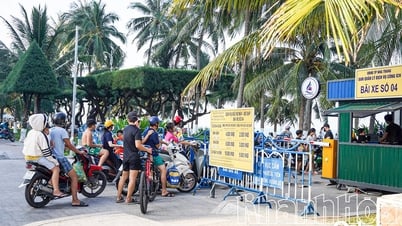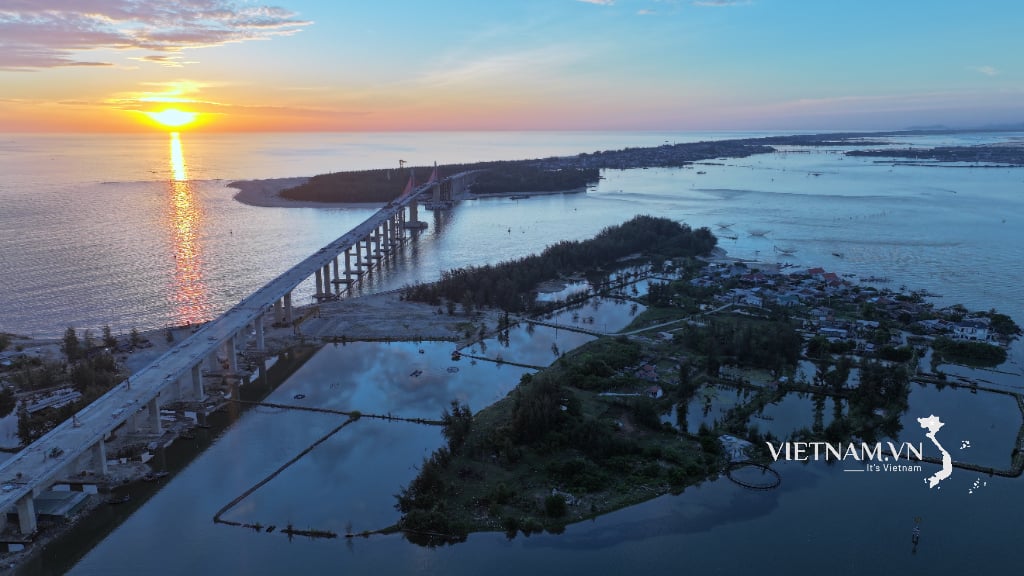
The three provinces: Ninh Binh, Ha Nam , Nam Dinh, although having three names, were once a sacred land of talented people. Through many times of mergers and separations, the bond has never faded like the poetic Day River, like the melodies of Cheo, Xam, Van singing, and the folk songs and proverbs that have never been broken. Now, facing the need for regional development and the strong desire for integration, the story of "merger" is not only strategic, but also a call from history and the people.
From the flow of history
Looking back at history, from the time of the founding of the nation under the Dinh-Tien Le dynasties and the early Ly dynasty, the land that is now Ninh Binh province (new) was the place where the power of the Dai Co Viet nation was concentrated, where the Hoa Lu capital was located and also the first military -administrative-economic center of our country in the early period of independence and autonomy. This territory, in the past, took the Hoa Lu-Gia Vien-Yen Mo (Ninh Binh) region as the center of power, called Truong Yen prefecture and took the neighboring areas to the North (Ha Nam, Nam Dinh) as a buffer zone, where soldiers were recruited and the river mouths were guarded.
During the Ly and Tran dynasties, this area belonged to Son Nam route, with important prefectures such as Truong Yen and Thien Truong, playing the role of political , religious and military center in the south of Thang Long citadel. Thien Truong prefecture (Nam Dinh) was also the birthplace of the Tran dynasty, once considered the "second capital" of Dai Viet.
Under the Later Le Dynasty, the administrative space was divided more clearly according to the system of Thua Tuyen-Phu-Huyen-Tong, but this area was still considered the Son Nam Thuong-Son Nam Ha region. Prefectures such as Ly Nhan, Nghia Hung, Truc Dinh, Yen Mo, Gia Vien were all familiar place names, continuously through many dynasties.
During the Nguyen Dynasty, King Minh Mang, who created the hierarchical system of province-district-commune governance, arranged this region into Nam Dinh province, which covered almost all of the three current provinces. Then, in 1831, Ninh Binh province was separated. At the end of the 19th century, under the French colonial period, with the policy of divide and rule, Nam Dinh, Ha Nam, and Ninh Binh were separated into separate provinces. In 1976, the three provinces were merged into Ha Nam Ninh province. On December 26, 1991, the 10th Session of the 8th National Assembly of the Socialist Republic of Vietnam issued a Resolution on dividing Ha Nam Ninh province into two provinces, named Nam Ha province and Ninh Binh province. On April 1, 1992, Ninh Binh province officially came into operation under the new administrative unit. On November 6, 1996, the 10th session of the 9th National Assembly passed a resolution to divide Nam Ha province to re-establish Ha Nam and Nam Dinh provinces. On January 1, 1997, Ha Nam province officially came into operation. Ha Nam Ninh province was divided into 3 provinces: Ninh Binh, Nam Dinh, Ha Nam until now.
According to Mr. Nguyen Xuan Anh, National Institute of Urban and Rural Planning (Ministry of Construction): The process of division, consolidation, and re-establishment reflects a reality: Ha Nam-Nam Dinh-Ninh Binh is a historical-geographical-cultural space with deeply connected origins in nature, culture, and economy, and is still a regional structure with the potential to operate in a unified manner in modern development thinking.
To the source never calm
Through many divisions and mergers, these three lands are still organically intertwined: sharing the same river, the same lifestyle, the same cultural and historical values. The people here still call each other "fellow countrymen" Ha Nam Ninh, like an emotional undercurrent that has never subsided. In the minds of many generations of people in the Northern Delta, the name "Ha Nam Ninh" is not simply an administrative unit that existed for more than 15 years, from 1975 to 1991, it is a symbol of a period of solidarity, sharing and convergence of the strength of three localities: Ninh Binh - Nam Dinh - Ha Nam. Although separated due to development requirements, the memory of a time of solidarity, connection and resonance is still deeply imprinted in the hearts of the people.
It is not until now that people talk about "rekindling old ties". Mr. Pham Hong Huong, 79 years old, Hoa Lu city (Ninh Binh), still remembers clearly the time when he was an officer of the Emulation Board of Ha Nam Ninh province: "After leaving the army, I was assigned to work at the Emulation Board of Ha Nam Ninh province and then settled down my family life there. In 1992, when the province was separated, because I was from Nho Quan, Ninh Binh, I was assigned to work in Ninh Binh. However, the deep affection for the land and people of Nam Dinh is always imprinted in my heart. Although it was divided into 3 provinces, when mentioning the familiar name Ha Nam Ninh, everyone feels close; until now, the 3 provinces have merged, I am very happy; merging is to open up a new future, for the common development of the region, of the country...".
Mr. Bui Xuan Son, former Secretary of the Ha Nam Ninh Provincial Party Committee, currently living in Ha Nam province, shared: 30-40 years ago, when the country was in a difficult situation, the market economy opened up... in that condition, we had to divide so that each place could make a little more effort, in fact, to solve the problem of life to make it less difficult. When the separation was over, I thought that one day our three provinces would have to merge. The policy of merging provinces and cities along with streamlining the apparatus that is being carried out is completely correct. The new province will create a larger development space, with both sea, plains, and mountains, connecting the advantages of each locality.
In the context of the country entering a new development period, requiring restructuring of development space and organizing a streamlined and effective apparatus; therefore, the policy of re-establishing a new province from these three localities named "Ninh Binh province" is not only a return, but also a step forward, a new positioning for the land of talented people.
Open up new development space
Thoroughly implementing the spirit of Resolution No. 60-NQ/TW, dated April 12, 2025, the 11th Conference of the 13th Party Central Committee, Conclusion No. 127-KL/TW dated February 28, 2025 of the Politburo and the Secretariat on implementing research and proposing to continue to reorganize the apparatus of the political system, restructuring the administrative space to streamline the apparatus, improve the effectiveness of state management and promote sustainable development is identified as a key task. In that context, the merger of the three provinces of Ha Nam, Nam Dinh and Ninh Binh into the new Ninh Binh province is considered a strategic step.
After the merger, Ninh Binh province possesses its own potentials and competitive advantages, formed from the combination of economic-cultural and social factors and resources. The new development space after the merger has a natural area of about 3,942.61 km2, a population of more than 4.4 million people (the 6th largest in the country if calculated according to current provinces). It has an important and strategic geographical location as the "gateway" to the south of the Northern Delta, belonging to the North-South economic corridor (North-South expressway, Ninh Binh-Hai Phong expressway, National Highway 1, National Highway 10, National Highway 45), the coastal economic corridor of the Gulf of Tonkin and the East-West economic corridor (including: National Highway 21 and Nam Dinh-Lac Quan axis; National Highway 12B and Nho Quan-Kim Son axis); transit connection point of 3 economic regions: Red River Delta, North Central and Central Coast, Northern midlands and mountainous region (Northwest region).
With a rich cultural and historical tradition, the three provinces of Ha Nam, Nam Dinh and Ninh Binh converge many layers of value, known as localities with many cultural-historical heritages, natural landscapes, traditional festivals and unique tourism products, with nearly 5,000 relics of all kinds inventoried, including 1 world cultural and natural heritage (Trang An Scenic Landscape Complex is the first mixed heritage of Vietnam and Southeast Asia) and 1 representative intangible cultural heritage of humanity "Practice of worshipping the Mother Goddesses of the Three Realms of the Vietnamese people" recognized by UNESCO.
The merger of the three provinces is not simply an administrative adjustment, but a strategic turning point to elevate the Southern Red River Delta region to a strong socio-economic center, with regional and international competitiveness. It is also the way we reposition a land with history, tradition, and outstanding potential to a new level of development. As a veteran official said: “We are not going back to the old path. We are laying a new brick for the national development corridor in the Southern Red River Delta.”
In the flow of innovation and integration, the new Ninh Binh province will not only be an administrative place, but will be a vivid demonstration of the spirit of "joining forces to break through" to arouse the power of convergence to create a prosperous future.
* Part II: Three shades - A comprehensive development platform
Source: https://baoninhbinh.org.vn/khoi-day-suc-manh-hoi-tu-kien-tao-khat-vong-tuong-lai-ky-i-234656.htm





































































































Comment (0)